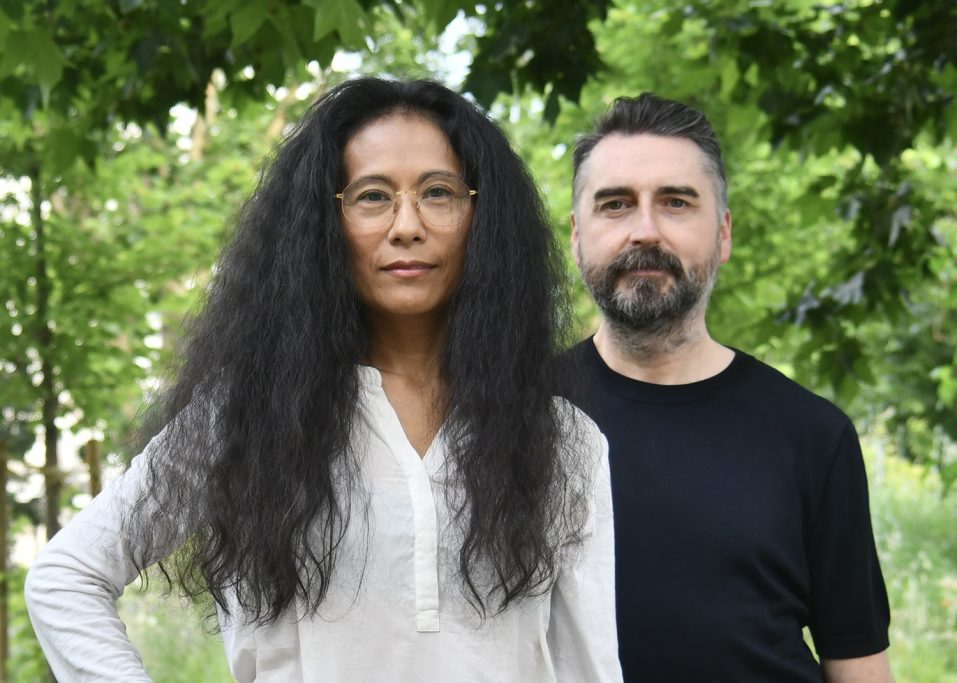
Oscar Santillán
NON (New Natural Organs)
Apr 16, 2025 – May 31, 2025
The practice of Oscar Santillan (Ecuador, 1980) has mutated and expanded profoundly in recent years. His devotion to research, often immersed in history, science, and technology, remains, though now with a more decidedly sensorial and sensual approach.
NON (New Natural Organs), Santillan’s current exhibition, is based on the concept of Antimundo, coined by the artist, which refers to “that which exists beyond known reality. It is a cosmovision that embraces everything that escapes the logic of the dominant order, called the world“. Thus, if for the hegemonic world it is perfectly possible to categorize our planetary reality in a rational and systematic way (what modern science calls taxonomy), the Antimundo denies it by proposing relationships instead of linear categories.

Ximena Garrido-Lecca at The Renaissance Society
Germinations
Jan 15 – Feb 15, 2025
Originating in extensive research and culminating in material sculptures or installations, Ximena Garrido-Lecca’s work foregrounds indigenous knowledge systems and artisanal traditions along with modern technological infrastructures. Often grounded in the specific histories of Peru, where she was born, her body of work also tracks how extractive industry and related economic paradigms have taken on increasingly global dimensions.
For a new large-scale project at the Renaissance Society, Germinations, Garrido-Lecca continues her research into plants originally domesticated by Andean and Mesoamerican cultures and their subsequent global dissemination. Taking center stage here is Solanum tuberosum, a tuber known in many places as the potato. Domesticated more than 8,000 years ago in the Altiplano region, the potato has been a pillar in the lives of Andean communities, where it is grown as a source of sustenance and attributed symbolic and spiritual value. Today, more than 4,000 potato varieties have been adapted to different altitudes and climatic conditions around the world.
In Chicago, Garrido-Lecca unveils an installation inspired by Andean cosmovision, the planting and harvesting of potatoes as ritual events, and a unit of measurement known as the papacancha, which unites space, time, and climate. Throughout its various elements, Germinations draws on the Andean concept of Pacha, a word with diverse interrelated meanings, which evokes, among other things, a cyclical and simultaneous dimension in which past, present, and future occur.
Curated by Karsten Lund.

Sandra Gamarra Heshiki
"Pinacoteca Migrante" at the Spanish Pavilion in the 60th Venice Biennale
April 20 – November 24, 2024
The artist Sandra Gamarra will occupy the Spanish Pavilion with her project “Pinacoteca Migrante / Migrant Art Gallery”. As the first migrant chosen to represent Spain, Gamarra sees the museum as a narrator of great stories, which utilizes representation methods understood as “universal”.
Accompanied by the curator Agustín Pérez Rubio, the artist will transform the Spanish Pavilion into a historic gallery of Western art where the notion of “migration”, in its many facets, will be the protagonist. The Western concept of the art gallery, which was exported to the former colonies, is inverted, exposing a series of historically silenced narratives. Thus, “Migrant Art Gallery” responds to accessibility, diversity and sustainability within an institutional framework and inserts contemporary contexts in relation to racism, migration or extractivism. The protagonists are the migrants, both human and not.

Our represented artists in Phaidon’s “Latin American Artists: From 1785 to Now”
We are proud to announce the participation of Fernando Bryce, Sandra Gamarra, Ximena Garrido-Lecca, Andrés Pereira Paz, Rita Ponce de León and Oscar Santillán in Phaidon publication “308 Latinamerican Artists from 1785 to now”.